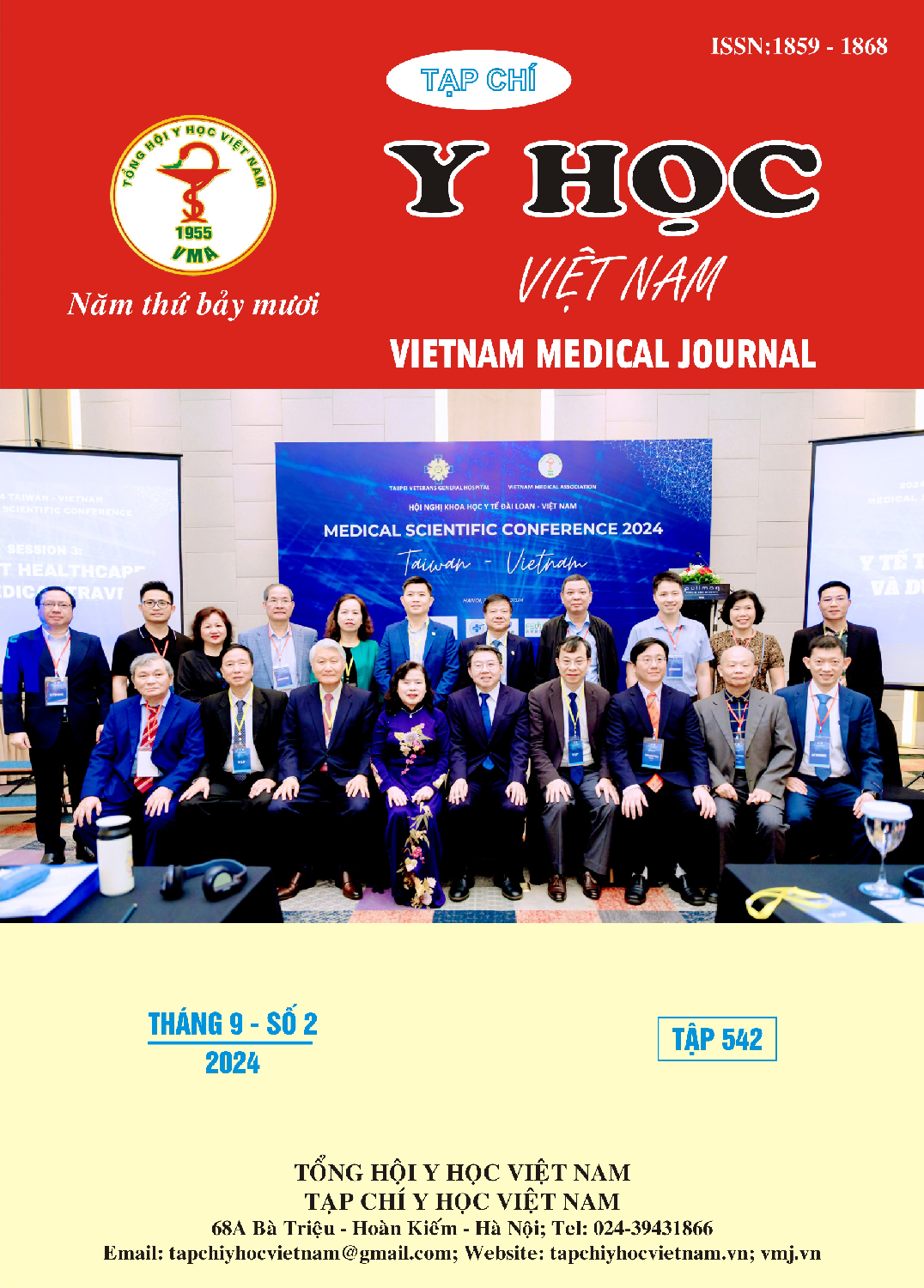ASSOCIATION BETWEEN THE EXPRESSION OF LNCRNA EPB41L4A-AS1 AND IFI6LNC2 WITH SOME CLINICAL AND LABORATORY CHARACTERISTICS IN PATIENTS WITH DENGUE HEMORRHAGIC FEVER
Main Article Content
Abstract
Objectives: The study aims to determine the relationship between the expression of lncRNA EPB41L4A-AS1 and IFI6lnc2 with some clinical and laboratory characteristics in patients with Dengue hemorrhagic fever. Methods: The levels of the two lncRNA were compared between groups of Dengue patients with different clinical and laboratory characteristics. Results: EPB41L4A-AS1 and IFI6lnc2 levels in the group of Dengue patients positive with anti-DENV-IgM, IgG, subcutaneous bleeding, and mucosal bleeding were higher than those without symptoms (p<0.05). In the group of patients with platelet <50G/L; from 50 to 100G/L; >100G/L: EPB41L4A-AS1 levels were 9.23±10.52; 5.98±8.57; 2.54±10.5 (105copies/ml), respectively; IFI6lnc2 levels were 6.96±6.11; 4.78±6.04; 1.22±3.54 (105copies/ml), respectively and the difference between compared groups was statistically significant (p<0.05). The lowest levels of the two lncRNAs were in the patients with liver enzyme GOT, GPT<80U/L; following by the patient group with GOT, GPT from 80 to 400U/L and were highest in the patient group with liver enzym >800U/L. Conclusion: LncRNA EPB41L4A-AS1 and IFI6lnc2 were associated with anti-DENV IgM and IgG antibody status, subcutaneous bleeding, mucosal bleeding; high GOT and GPT enzyme and low platelet count.
Article Details
Keywords
Long non-coding RNA (lncRNA), EPB41L4A-AS1 concentration, IFI6lnc2 concentration
References
2. Liu W., Ding C. (2017). Roles of LncRNAs in viral infections. Frontiers in cellular infection microbiology, 7, 205.
3. Mukherjee S., Banerjee B., Karasik D., et al. (2021). mRNA-lncRNA Co-expression network analysis reveals the role of lncRNAs in immune dysfunction during severe SARS-CoV-2 infection. 13 (3), 402.
4. Zhang Y., Chi X., Hu J., et al. (2023). LncRNA LINC02574 Inhibits Influenza A Virus Replication by Positively Regulating the Innate Immune Response. International Journal of Molecular Sciences, 24 (8), 7248.
5. Thomas L., Najioullah F., Verlaeten O., et al. (2010). Relationship between nonstructural protein 1 detection and plasma virus load in Dengue patients. The American journal of tropical medicine hygiene, 83 (3), 696.
6. Bhatt P., Sabeena S. P., Varma M., et al. (2021). Current understanding of the pathogenesis of Dengue virus infection. Current microbiology, 78 (1), 17-32.
7. Feng E., Balint E., Poznanski S. M., et al. (2021). Aging and interferons: impacts on inflammation and viral disease outcomes. Cells, 10 (3), 708.
8. Hamdy S. M., Ali M. S., Abd El-Hmid R. G., et al. (2023). Role of long non coding RNAs, NEAT1 and Lnc-DC expression in pediatric immune thrombocytopenic purpura. Reports of Biochemistry Molecular Biology, 11 (4), 635.
9. Wang X.-J., Jiang S.-C., Wei H.-X., et al. (2017). The differential expression and possible function of long noncoding RNAs in liver cells infected by Dengue virus. The American journal of tropical medicine hygiene, 97 (6), 1904.
10. Pandey A. D., Goswami S., Shukla S., et al. (2017). Correlation of altered expression of a long non-coding RNA, NEAT1, in peripheral blood mononuclear cells with Dengue disease progression. Journal of Infection, 75 (6), 541-554.


